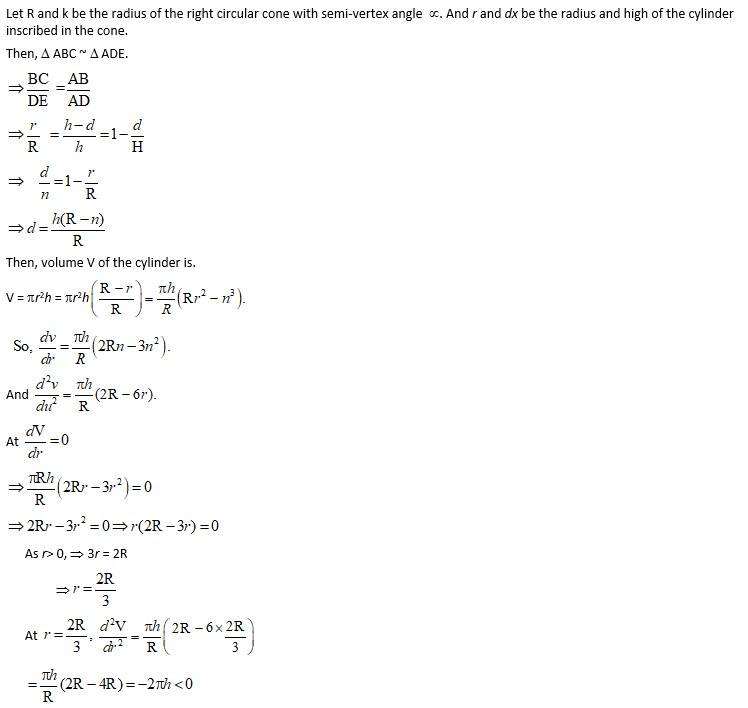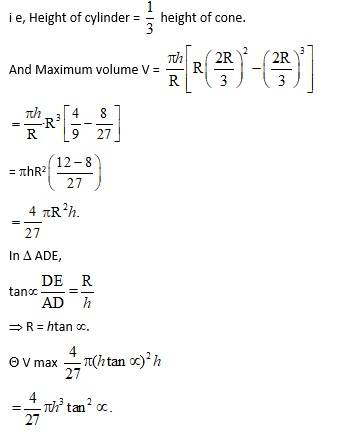Maths
Get insights from 6.5k questions on Maths, answered by students, alumni, and experts. You may also ask and answer any question you like about Maths
Follow Ask QuestionQuestions
Discussions
Active Users
Followers
New answer posted
5 months agoContributor-Level 10
The equation of the given curve is
Differentiate with respect to x, we have:
The slope of the normal to the given curve at point is
The equation of the normal to the curve at is
It is given that the normal makes intercepts with the axes.
Therefore, we have:
Also, the point lies on the curve, so we have
From (i) and (ii), we have:
From (ii), we have:
Hence, the required points are .
Therefore, option (A) is correct.
New answer posted
5 months agoContributor-Level 10
The equation of the given curve is
Differentiating with respect to x, we have:
The slope of the normal to the given curve at point (h,k) is given by,
Equation of the normal at point (h,k) is given as:
Now, it is given that the normal passes through the point (1,2).
Therefore, we have:
Since (h,k) lies on the curve ,we have
From equation (i), we have:
Hence, the equation of the normal is given as:
Therefore, option (A) is correct.
New answer posted
5 months agoContributor-Level 10
The equation of the given curve is .
Differentiate with respect to x, we have:
The slope of the normal to the given curve at point (1,1) is
Hence, the equation of the normal to the given curve at (1,1) is given as:
Therefore, option (B) is correct.
New answer posted
5 months agoContributor-Level 10
The equation of the tangent to the given curve is
Now, substituting in we get:
Since a tangent touches the curve at one point, the roots of equation (i) must be equal.
Therefore, we have:
Discriminant = 0
Hence, the required value of m is 1.
Therefore, option (A) is correct.
New answer posted
5 months agoContributor-Level 10
Let x be the depth of the wheat inside the cylindrical tank is with radius = 10 cm
Then, Volume V of the cylindrical tank is
V = π (10)2x = 100πpx m3
As
i e, rate of increasing of depth
option (A) is correct
Taking an Exam? Selecting a College?
Get authentic answers from experts, students and alumni that you won't find anywhere else
Sign Up on ShikshaOn Shiksha, get access to
- 65k Colleges
- 1.2k Exams
- 679k Reviews
- 1800k Answers



